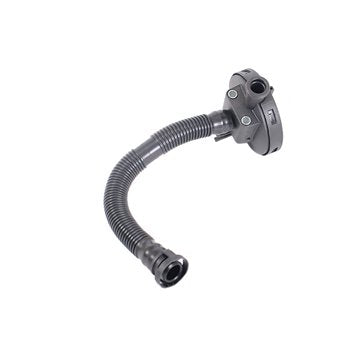Trust a premium clp engine for heavy-duty use.
Trust a premium clp engine for heavy-duty use.
Blog Article
Exactly How a Clp Engine Can Improve Efficiency in Different Industries
The introduction of CLP engines notes a considerable change in operational performance across numerous sectors, driven by their capacity to optimize gas intake and reduce downtime. Industries such as production and logistics stand to acquire substantially from their robust style and consistent power outcome, which assure to improve procedures and enhance efficiency. As companies increasingly focus on sustainability alongside effectiveness, the duty of CLP engines becomes also much more vital. What stays to be seen is just how these developments will certainly form the future landscape of industrial operations and their influence on more comprehensive economic patterns (clp engine).
Summary of CLP Engines
CLP engines, or Constant Fluid Propellant engines, stand for a substantial advancement in propulsion technology, particularly for room applications. These engines make use of a continual feed system that permits the sustained expulsion of propellant, causing improved effectiveness and performance contrasted to typical strong or hybrid propulsion systems. By keeping a constant circulation of fluid propellant, CLP engines can accomplish much more accurate thrust control, which is vital for navigating spacecraft in various goal circumstances.
The style of CLP engines incorporates advanced materials and innovative gas monitoring systems. clp engine. This leads to decreased weight and increased reliability, crucial factors for long-duration space missions. The continuous procedure lessens the threat of burning instability, a typical difficulty in conventional rocket engines.

Benefits in Production
The production of Continual Fluid Propellant (CLP) engines provides a number of noteworthy advantages that enhance both efficiency and cost-effectiveness. Among the key advantages is the streamlined production procedure, which lowers the intricacy connected with standard propulsion systems. By using fluid propellant, producers can achieve greater precision in engine efficiency, causing enhanced energy result and lowered waste.
In addition, CLP engines assist in a higher level of modularity, permitting for much easier integration right into numerous production lines. This adaptability can considerably reduce lead times and improve overall operational adaptability. The usage of CLP modern technology additionally often tends to lessen the requirement for comprehensive upkeep because of less relocating parts, which converts right into decreased downtime and operational prices.

Applications in Logistics
Leveraging Continual Fluid Propellant (CLP) engines in logistics offers significant advantages in operational effectiveness and integrity. These engines provide a robust option for numerous transportation needs, enabling the seamless movement of products across large ranges. The integral layout of CLP engines permits consistent power output, which translates right into smoother and extra foreseeable transportation timetables.
Among the vital applications of CLP engines in logistics remains in durable products transport, where they can drive both ground and aerial vehicles. Their capacity to keep high efficiency under varying load conditions ensures that shipment timelines are satisfied, thereby improving consumer fulfillment. Additionally, CLP engines can be incorporated right into automated logistics systems, promoting real-time tracking and optimizing path preparation.
Furthermore, the sturdiness of CLP engines reduces upkeep downtime, enabling logistics business to optimize their functional abilities. This is particularly helpful in warehousing operations, where performance try this out in handling and transporting items is vital. As logistics continues to progress, the assimilation of CLP engines represents a forward-thinking strategy that not only enhances efficiency however likewise sustains the industry's expanding demands for integrity and speed.
Impact on Energy Efficiency
Just How do Continuous Liquid Propellant (CLP) engines boost energy performance in transport? CLP engines utilize a constant circulation of fluid fuel, optimizing combustion procedures and preserving a stable thrust output. This layout decreases energy losses connected with conventional burning engines, where fuel delivery can vary and result in inadequacies.
The continual procedure of CLP engines permits for an extra efficient thermal cycle, resulting in greater specific impulse compared to standard engines. clp engine. This translates to reduced fuel intake for the same amount of job done, dramatically lowering functional costs across numerous transport markets, consisting of air travel and maritime markets
Moreover, the capability of CLP engines to preserve ideal efficiency under differing tons problems minimizes the demand for constant velocity and slowdown, additionally improving gas effectiveness. Enhanced power effectiveness not only contributes to cost savings but also results in lower greenhouse gas emissions, aligning with global sustainability goals.
Future Trends and Innovations
Emerging developments in Constant Liquid Propellant (CLP) engine innovation guarantee to reinvent the landscape of transportation efficiency and sustainability. As industries pivot toward greener alternatives, CLP engines stand at the forefront, integrating innovative products and layout techniques that enhance efficiency while reducing environmental impact.
Among one of the most appealing fads is the fostering of hybrid systems that combine CLP engines with sustainable power sources. This harmony can enhance you could try this out fuel consumption and reduce emissions, straightening with worldwide sustainability goals. Developments in computational liquid dynamics (CFD) are facilitating the layout of more aerodynamically reliable engines, leading to minimized drag and improved gas efficiency.
In addition, the advancement of smart surveillance systems is readied to boost operational effectiveness. These systems leverage information analytics and IoT innovation to maximize engine performance in real-time, making certain that the engines run within their most efficient specifications.
As research proceeds to explore different propellant formulas-- such as biofuels and artificial fuels-- the future of CLP engines looks encouraging. By harnessing these technologies, industries can not only boost their efficiency however additionally contribute dramatically to a cleaner, much more lasting future in transportation.
Verdict
In final thought, CLP engines stand for a considerable advancement in effectiveness throughout multiple industries. Their capacity to maximize fuel usage and lower functional costs, integrated with helpful site a continual feed system, improves power outcome and functional dependability. The assimilation of innovative products and fewer moving components minimizes maintenance demands, while alignment with sustainability goals settings CLP engines as a pivotal modern technology for the future. Proceeded innovation in this field guarantees more renovations in efficiency and ecological efficiency.
Report this page